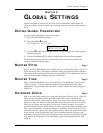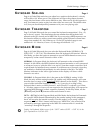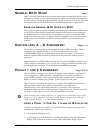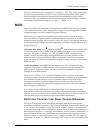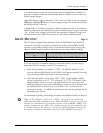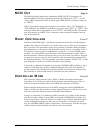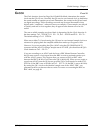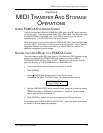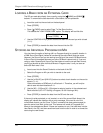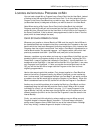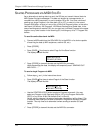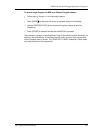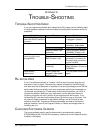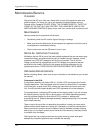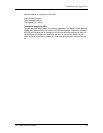
MIDI Transfer and Storage Operations: Chapter 9
CHAPTER 9
MIDI TRANSFER AND STORAGE
OPERATIONS
USING PCMCIA EXPANSION CARDS
The QS provides two PCMCIA EXPANSION CARD slots, [A] or [B], which are found
on the rear panel. These accomodate Alesis QCard RAM cards. The QCard is a type
of PCMCIA SRAM or FlashRAM card; it has 256K of memory and will store 4
complete banks. A 512K PCMCIA card can store 8 banks.
When saving data to a card that contains a ROM (READ-ONLY) bank, the ROM data
is found in bank 1; this means you cannot save anything into bank 1. Each PCMCIA
Expansion Card slot can house a card with up to 8 Mb of RAM, for a total of 16
additional megabytes of sound storage.
SAVING THE USER BANK TO A PCMCIA CARD
The entire contents of the QS’s User memory (100 Mixes and 128 Programs) can be
stored to an Alesis QCard PCMCIA RAM card inserted into either PCMCIA
EXPANSION CARD slot [A] or [B] on the QS. Depending on the amount of RAM a
particular card has, up to 8 complete banks can be stored onto it.
¿ Insert a card into the Sound Card slot on the back of the QS.
¡ Press [STORE].
¬ Press [ PAGE] twice to select Page 6 of the Store function.
This selects the “SAVE TO CARD” option. The display will look like this:
SAVE TO CARD 1?
(Press STORE)
√ Use the CONTROLLER [D] slider to select a bank location on the card to store to
(1–11).
If the card contains a ROM bank, it will be bank 1. Therefore, you will only be
able to save into bank locations 2–11.
ƒ Press [STORE] to transfer the user bank data from the QS onto the card.
If the display reads “CARD IS WRITE PROTECTED.”, switch the write-protect switch
on the card to off and repeat the procedure.
QS7/QS8 Reference Manual 121



